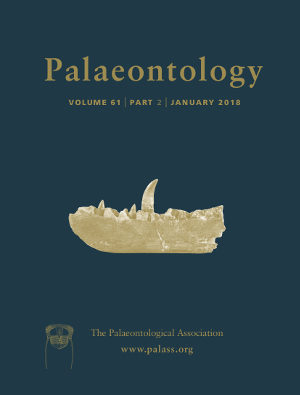Reg. Charity No. 1168330

The earliest growth of post‐metamorphic (post‐larval) shells in two species of Eohadrotreta is described from the Cambrian Shuijingtuo Formation of South China. Two different growth patterns can be observed by quantifying developmental variations in size and shape of successive stages of post‐metamorphic shell growth (including the pedicle foramen forming stage, pedicle foramen enclosing stage and intertrough increasing stage) of Eohadrotreta zhenbaensis and Eohadrotreta? zhujiahensis. The pedicle foramen is never enclosed within the metamorphic shell of E. zhenbaensis, while the enclosed pedicle foramen of E.? zhujiahensis is located directly outside the metamorphic shell after the pedicle foramen enclosing stage. A strongly allometric growth pattern of E. zhenbaensis is demonstrated by the early enclosure of the pedicle foramen; an accelerated lengthening of the ventral intertrough is associated with the development of a more complex dorsal median septum during the intertrough increasing stage. By contrast, E.? zhujiahensis demonstrates possible paedomorphic development by delayed enclosure of pedicle foramen and an associated decreased lengthening of ventral intertrough during the intertrough increasing stage. This ontogenetic developmental sequence represents the marginal accretionary formation and growth of the pedicle foramen, which resembles that of linguloid brachiopods. Furthermore, the developmental process of the pedicle foramen of Eohadrotreta seems to recapitulate the likely evolutionary transition from the Botsfordiidae, with open delthyrium, to the Acrotheloidea, with an enclosed foramen. This study provides a unique opportunity to obtain a complete understanding of the ontogenetic development of the earliest acrotretoids, and casts new light on the phylogeny of lingulate brachiopods.